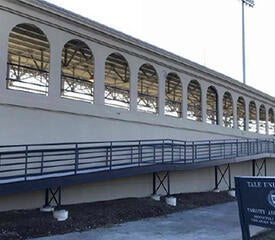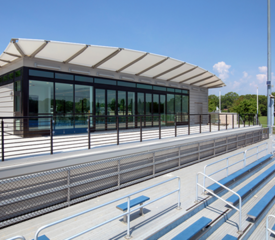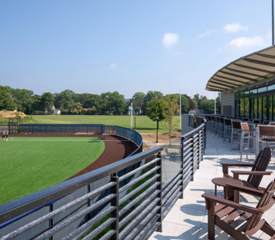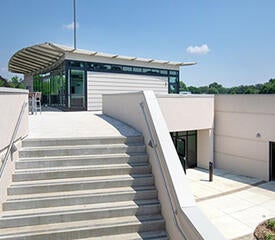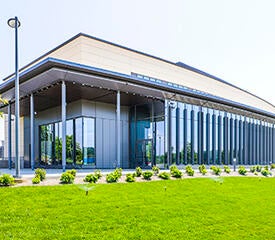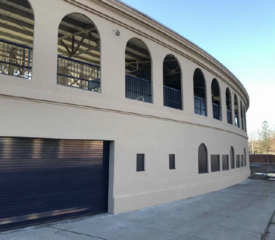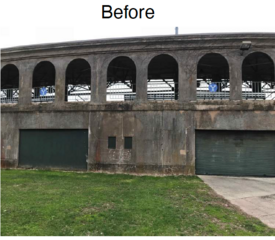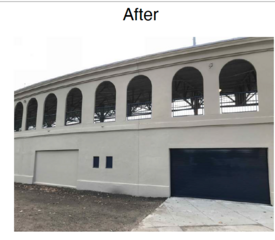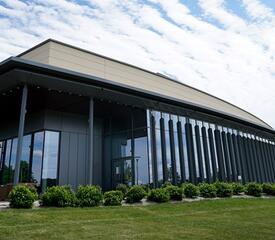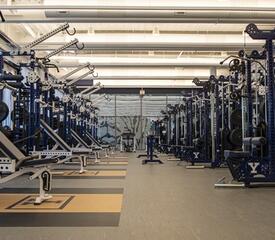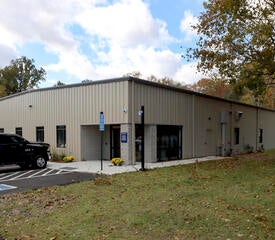We want to hear from you! Take the survey.
How do you use It’s Your Yale? How can it be improved? Answer for a chance to win Yale swag.
Yale Athletics fields and buildings offer an enhanced experience
November 19, 2021
Over the past several years, Yale’s Athletics fields have experienced a major revitalization. Brand new buildings were constructed, and existing facilities were refurbished, providing exceptional state-of-the-art spaces for athletes, visitors, and staff to serve their programs through training, sporting events, and maintenance. While the COVID-19 pandemic shut down athletic programs at the University during 2020, that downtime allowed many older buildings and grounds to receive attention.
Today, an athlete playing on a field or a visitor watching from one of the adjacent facilities can look across freshly manicured green acres and see new architecture purposefully integrated with the carefully renovated older structures. Since 2018, a series of large and small projects included two new facilities (the Carol Roberts and Tsai Lacrosse Field Houses) as well as upgrades to historic buildings like Coxe Cage and the George H. W. Bush ‘48 Field. Many individuals across the Office of Facilities and beyond spent years on planning, design, and construction, transforming these approximately 26 acres of buildings and grounds to their current renewed status.
New Yale Athletics buildings
Carol Roberts Field House
Built from the ground up, the Carol Roberts Field House, completed in 2018, is a 5,900 square foot facility that supports the Yale women’s softball and field hockey teams. A lead gift from Carol Roberts ‘81, who played field hockey and softball for Yale, helped fund this project. The building sits snugly between Johnson Field and the 5K Corral Field at DeWitt Family Stadium and includes spacious locker rooms, a training room, a satellite coaches’ office, a team meeting space, and a second-story observation deck featuring a glass-walled event space. This is the first building on campus with a tensile-supported roof canopy, which includes a roof membrane held together by steel cables.
Tsai Lacrosse Field House
Located southwest of the Yale Bowl and adjacent to Reese Stadium, this brand-new building is courtesy of a generous gift from former men’s lacrosse player Joseph C. Tsai ‘86, ‘90 J.D., and his wife, Clara Wu Tsai. The Tsai Lacrosse Field House opened in May 2021 and welcomed Yale’s soccer and lacrosse teams this fall. The 34,800 square foot facility includes an athletic medicine and sports performance area, strength and conditioning weight room, film room, team center, locker rooms, and offices. Additionally, a hydrotherapy room with a built-in water treadmill offers hot and cool tubs for training and rehabilitation.
Athletics Facilities Grounds Maintenance Garage
In 2019, the former armory across the street from the Yale Bowl was demolished. Built in 1917 for the Yale Artillery Battalion, the building featured a large drill hall, a shooting range, and horse stables. It later served Yale’s polo and equestrian teams until 2009, when the University started using it as a facilities maintenance garage, storing equipment like trucks and lawnmowers.
The new Athletics Facilities Grounds Maintenance Garage, which was completed in May 2021, was built on land further west of the demolition site which used to support horse corrals for the polo and equestrian program. Designed with space efficiency in mind, the 10,000 square foot building provides more vertical storage with large racking shelves for material and tool storage. It also boasts new offices and break areas for staff.
Renovated or refreshed buildings and grounds
George H. W. Bush ‘48 Field
Formerly Yale Field, the location was used as a simple baseball field for decades before a concrete and steel structure was completed in 1927. In 2020, a major project was completed at Yale Field to restore and refresh the historic façade. The goal was to reboot the original look of this landmark stadium and provide repairs to stabilize its exterior shell. Other upgrades included interior renovations to the team locker rooms, stadium signage, a fire alarm system, lighting, and restrooms.
Before the refurbishment, green ivy had grown up the cracked and crumbling exterior walls. All of the arches on the upper concourse were replaced, while the entire façade received a new skin and coating system to protect against damage from moisture. The steel structure was revitalized by removing and replacing older beams. “The stadium is once again quite lovely visually, and also structurally sound,” said Jeromy Powers, Lead Planner, Office of Facilities.
In April 2021, Yale Athletics announced that the historic Yale Field would be named George H. W. Bush ‘48 Field in honor of the former U.S. President George Herbert Walker Bush, who captained the Yale baseball team during his senior season.
Coxe Cage
Home to the Yale men’s and women’s indoor track and field teams since 1927, Coxe Cage was named for Charles E. Coxe, Class of 1893. Coxe was a hammer thrower on Yale’s squad, who as an alum offered the funds to the University for the initial construction nearly a century ago. In January 2021, a comprehensive renovation of the façade was completed. This work included repointing the brick exterior and removing and replacing all the original glass windows with new energy-efficient glazing. The window frames were painted to match the historic look of the building. “It was a beautiful building, whose exterior had fallen to the ravages of time and weather. We breathed new life into it,” said Daniel Disco, Construction Project Manager, Office of Facilities.
Tennis courts
In close proximity to the Walter Camp Gate, all 12 outdoor varsity tennis courts were rebuilt and realigned in 2019. The old worn surfaces were dug up and new underlying asphalt was laid in its place. The courts were resurfaced in the famous U.S. Open blue standard. The long-abandoned clay tennis courts in this location were also removed, and were infilled to make way for an open green space that supports various athletic events and venues. The soil used to reshape this area was recycled from the aforementioned Armory demolition, which is only a few hundred yards to the west.
“I’m incredibly proud of all the athletics projects I’ve worked on. They were all equally challenging and rewarding. I’ve spent the better part of three years helping to create unique athletic venues that are functional yet beautiful showpieces. It’s been a very transformative process out there,” said Daniel.



